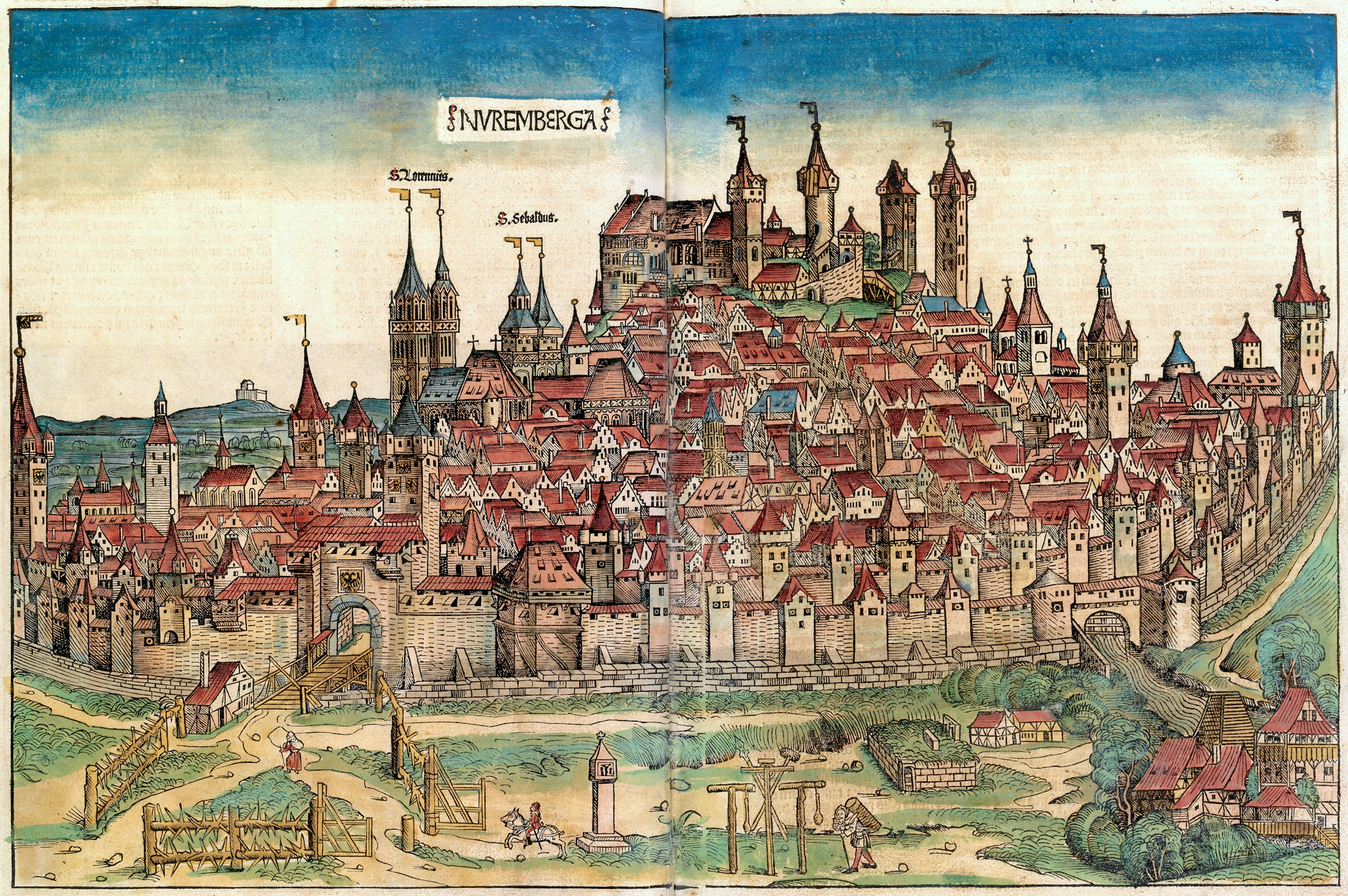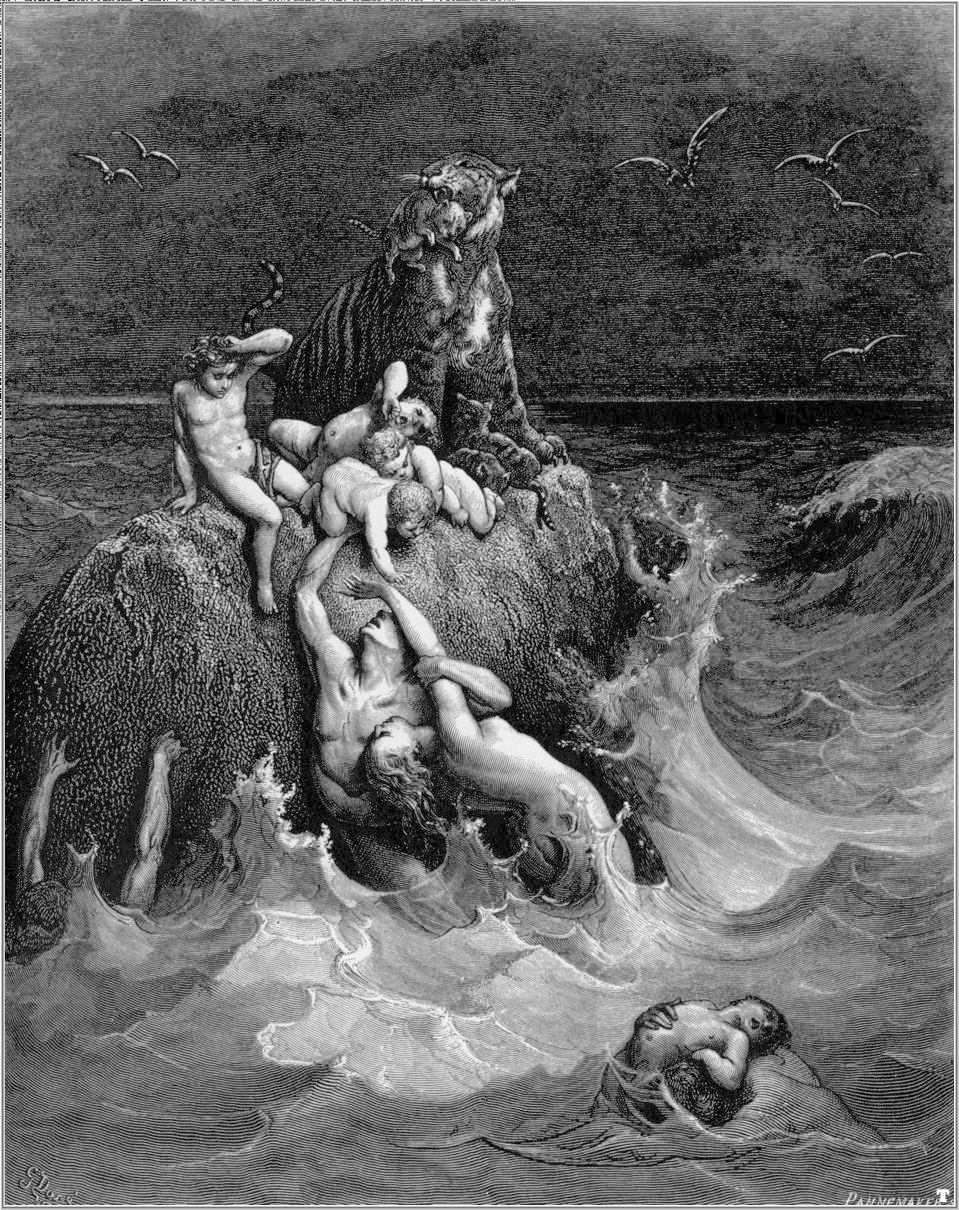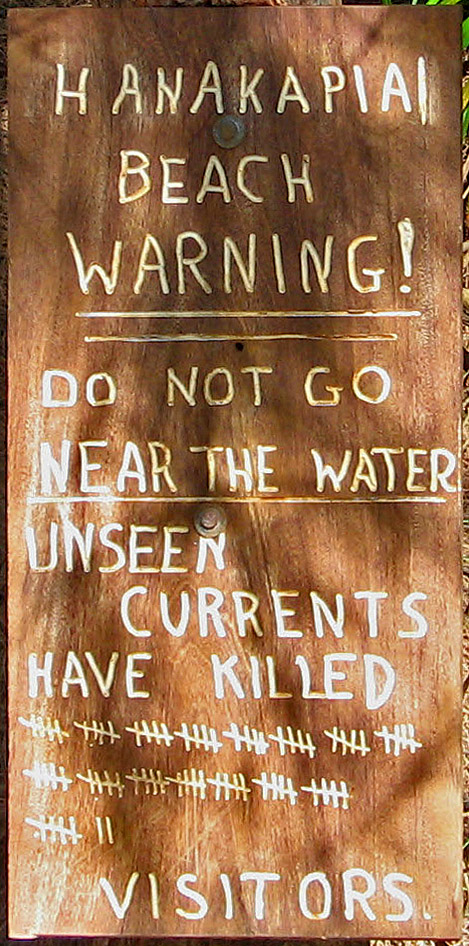|
Chronicon (Jerome)
The ''Chronicon'' (''Chronicle'') or ''Temporum liber'' (''Book of Times'') was a universal chronicle by Jerome written in Constantinople around the year 380. One of the earliest attempts of universal history; this is a Latin translation and expansion of the Greek chronological tables in the second part of the '' Chronicon'' of Eusebius, written about 50 years earlier. Despite numerous errors taken from Eusebius, and some of his own, Jerome produced a valuable work of universal history, if only for the example which it gave to such later chroniclers as Prosper of Aquitaine, Cassiodorus, and Victor of Tunnuna to continue his annals. In conformity with the Eusebius, Jerome dated Creation to 5200 BC. The Chronicle includes a chronology of the events of Greek mythology based on the work of Hellenistic scholars such as Apollodorus, Diodorus Siculus, and Eusebius. While many of the earlier sections contain legendary characters and events that are not necessarily historically factu ... [...More Info...] [...Related Items...] OR: [Wikipedia] [Google] [Baidu] |
Universal Chronicle
A universal history is a work aiming at the presentation of a history of all of humankind as a whole. Universal historians try to identify connections and patterns among individual historical events and phenomena, making them part of a general narrative. A universal chronicle or world chronicle typically traces history from the beginning of written information about the past up to the present. Therefore, any work classed as such purportedly attempts to embrace the events of all times and nations in so far as scientific treatment of them is possible. Siegfried of Ballhausen was the first to use the title ''Historia universalis'' (universal history) in 1304. Examples Ancient examples Hebrew Bible A project of Universal history may be seen in the Hebrew Bible, which from the point of view of its redactors in the 5th century BC presents a history of humankind from creation to the Flood, and from there a history of the Israelites down to the present. The Seder Olam is a 2nd-ce ... [...More Info...] [...Related Items...] OR: [Wikipedia] [Google] [Baidu] |
Destruction Layer
A destruction layer is a stratum found in the excavation of an archaeological site showing evidence of the hiding and burial of valuables, the presence of widespread fire, mass murder, unburied corpses, loose weapons in public places, or other evidence of destruction, either by natural causes (for example earthquakes), or as a result of a human action. Finding such destruction layers in a number of related sites may indicate a collapse of a state, especially if associated with an appearance of a markedly different culture in upper horizons. The archaeologist Sharon Zuckerman suggests that destruction context should not be studied in isolation but should be compared to activity on a site before and after the destruction event. Archaeological sites with destruction layers The city of Troy shows two famous destruction layers, Level 2 (dated approximately 2200 BC) and Level 7 (dated approximately 1200 BC, and linked with the Trojan War). The destruction layers associated with Knossos ... [...More Info...] [...Related Items...] OR: [Wikipedia] [Google] [Baidu] |
Ninus
Ninus (), according to Greek historians writing in the Hellenistic period and later, was the founder of Nineveh (also called Νίνου πόλις "city of Ninus" in Greek), ancient capital of Assyria. The figure or figures with which he corresponds in Assyrian records is uncertain; an association or identification with Ninurta has been proposed. An identification with Shamshi-Adad I, Shamshi-Adad V, and/or a conflation of the two have also been suggested. In Hellenic historiography Many early accomplishments are attributed to Ninus, such as training the first hunting dogs, and taming horses for riding. For this accomplishment, he is sometimes represented in Greek mythology as a centaur. The figures of King Ninus and Queen Semiramis first appear in the history of Persia written by Ctesias of Cnidus (c. 400 BC), who claimed, as court physician to Artaxerxes II, to have access to the royal historical records. Ctesias' account was later expanded on by Diodorus Siculus. Ninus cont ... [...More Info...] [...Related Items...] OR: [Wikipedia] [Google] [Baidu] |
Abraham
Abraham (originally Abram) is the common Hebrews, Hebrew Patriarchs (Bible), patriarch of the Abrahamic religions, including Judaism, Christianity, and Islam. In Judaism, he is the founding father who began the Covenant (biblical), covenantal relationship between the Jewish people and God in Judaism, God; in Christianity, he is the spiritual progenitor of all believers, whether Jewish or gentile, non-Jewish; and Abraham in Islam, in Islam, he is a link in the Prophets and messengers in Islam, chain of Islamic prophets that begins with Adam in Islam, Adam and culminates in Muhammad. Abraham is also revered in other Abrahamic religions such as the Baháʼí Faith and the Druze, Druze faith. The story of the life of Abraham, as told in the narrative of the Book of Genesis in the Hebrew Bible, revolves around the themes of posterity and land. He is said to have been called by God to leave the house of his father Terah and settle in the land of Canaan, which God now promises to Ab ... [...More Info...] [...Related Items...] OR: [Wikipedia] [Google] [Baidu] |
Genesis Flood Narrative
The Genesis flood narrative (chapters 6–9 of the Book of Genesis) is a Hebrew flood myth. It tells of God's decision to return the universe to its pre- creation state of watery chaos and remake it through the microcosm of Noah's ark. The Book of Genesis was probably composed around the 5th century BCE; although some scholars believe that primeval history (chapters 1–11), including the flood narrative, may have been composed and added as late as the 3rd century BCE. It draws on two sources, called the Priestly source and the non-Priestly or Yahwist, and although many of its details are contradictory, the story forms a unified whole. A global flood as described in this myth is inconsistent with the physical findings of geology, archeology, paleontology, and the global distribution of species. A branch of creationism known as flood geology is a pseudoscientific attempt to argue that such a global flood actually occurred. Some Christians have preferred to interpret th ... [...More Info...] [...Related Items...] OR: [Wikipedia] [Google] [Baidu] |
Valens
Valens (; ; 328 – 9 August 378) was Roman emperor from 364 to 378. Following a largely unremarkable military career, he was named co-emperor by his elder brother Valentinian I, who gave him the Byzantine Empire, eastern half of the Roman Empire to rule. In 378, Valens was defeated and killed at the Battle of Adrianople against the invading Goths, which astonished contemporaries and marked the beginning of barbarian encroachment into Roman territory. As emperor, Valens continually faced threats both internal and external. He defeated, after some dithering, the usurper Procopius (usurper), Procopius in 366, and campaigned against the Goths across the Danube in 367 and 369. In the following years, Valens focused on the eastern frontier, where he faced the perennial threat of Sasanian Empire, Persia, particularly in Kingdom of Armenia (antiquity), Armenia, as well as additional conflicts with the Saracens and Isaurians. Domestically, he inaugurated the Aqueduct of Valens in Cons ... [...More Info...] [...Related Items...] OR: [Wikipedia] [Google] [Baidu] |
Inclusive Counting
Counting is the process of determining the number of elements of a finite set of objects; that is, determining the size of a set. The traditional way of counting consists of continually increasing a (mental or spoken) counter by a unit for every element of the set, in some order, while marking (or displacing) those elements to avoid visiting the same element more than once, until no unmarked elements are left; if the counter was set to one after the first object, the value after visiting the final object gives the desired number of elements. The related term ''enumeration'' refers to uniquely identifying the elements of a finite (combinatorial) set or infinite set by assigning a number to each element. Counting sometimes involves numbers other than one; for example, when counting money, counting out change, "counting by twos" (2, 4, 6, 8, 10, 12, ...), or "counting by fives" (5, 10, 15, 20, 25, ...). There is archaeological evidence suggesting that humans have been c ... [...More Info...] [...Related Items...] OR: [Wikipedia] [Google] [Baidu] |
Ancient Rome
In modern historiography, ancient Rome is the Roman people, Roman civilisation from the founding of Rome, founding of the Italian city of Rome in the 8th century BC to the Fall of the Western Roman Empire, collapse of the Western Roman Empire in the 5th century AD. It encompasses the Roman Kingdom (753–509 BC), the Roman Republic (50927 BC), and the Roman Empire (27 BC476 AD) until the fall of the western empire. Ancient Rome began as an Italic peoples, Italic settlement, traditionally dated to 753 BC, beside the River Tiber in the Italian peninsula. The settlement grew into the city and polity of Rome, and came to control its neighbours through a combination of treaties and military strength. It eventually controlled the Italian Peninsula, assimilating the Greece, Greek culture of southern Italy (Magna Graecia) and the Etruscans, Etruscan culture, and then became the dominant power in the Mediterranean region and parts of Europe. At its hei ... [...More Info...] [...Related Items...] OR: [Wikipedia] [Google] [Baidu] |
Ancient Greece
Ancient Greece () was a northeastern Mediterranean civilization, existing from the Greek Dark Ages of the 12th–9th centuries BC to the end of classical antiquity (), that comprised a loose collection of culturally and linguistically related city-states and communities. Prior to the Roman period, most of these regions were officially unified only once under the Kingdom of Macedon from 338 to 323 BC. In Western history, the era of classical antiquity was immediately followed by the Early Middle Ages and the Byzantine period. Three centuries after the decline of Mycenaean Greece during the Bronze Age collapse, Greek urban poleis began to form in the 8th century BC, ushering in the Archaic period and the colonization of the Mediterranean Basin. This was followed by the age of Classical Greece, from the Greco-Persian Wars to the death of Alexander the Great in 323 BC, and which included the Golden Age of Athens and the Peloponnesian War. The u ... [...More Info...] [...Related Items...] OR: [Wikipedia] [Google] [Baidu] |
List Of Monarchs Of Iran
The monarchs of Iran ruled for over two and a half millennia, beginning as early as the 7th century BC and enduring until the 20th century AD. The earliest Iranian king is generally considered to have been either Deioces of the Median dynasty () or Cyrus the Great of the Achaemenid dynasty (550–330 BC). The last Iranian king was Mohammad Reza Pahlavi of the Pahlavi dynasty (1925–1979), which was overthrown by the Islamic Revolution. Since then, Iran has been governed as an Islamic republic#Iran, Islamic republic. In classical antiquity, Iran reached the peak of its power and prestige under the Achaemenid Empire, which stretched from Achaemenid Egypt, Egypt and parts of Southeast Europe in the west to the Achaemenid conquest of the Indus Valley, Indus Valley and parts of Central Asia in the east. By 323 BC, the Achaemenid Empire's territories had been conquered by the Macedonian Empire during the Wars of Alexander the Great, bringing Iran into the Hellenistic period, Hellenist ... [...More Info...] [...Related Items...] OR: [Wikipedia] [Google] [Baidu] |
Ancient Egypt
Ancient Egypt () was a cradle of civilization concentrated along the lower reaches of the Nile River in Northeast Africa. It emerged from prehistoric Egypt around 3150BC (according to conventional Egyptian chronology), when Upper and Lower Egypt were amalgamated by Menes, who is believed by the majority of List of Egyptologists, Egyptologists to have been the same person as Narmer. The history of ancient Egypt unfolded as a series of stable kingdoms interspersed by the "Periodization of ancient Egypt, Intermediate Periods" of relative instability. These stable kingdoms existed in one of three periods: the Old Kingdom of Egypt, Old Kingdom of the Early Bronze Age; the Middle Kingdom of Egypt, Middle Kingdom of the Middle Bronze Age; or the New Kingdom of Egypt, New Kingdom of the Late Bronze Age. The pinnacle of ancient Egyptian power was achieved during the New Kingdom, which extended its rule to much of Nubia and a considerable portion of the Levant. After this period, Egypt ... [...More Info...] [...Related Items...] OR: [Wikipedia] [Google] [Baidu] |
Assyria
Assyria (Neo-Assyrian cuneiform: , ''māt Aššur'') was a major ancient Mesopotamian civilization that existed as a city-state from the 21st century BC to the 14th century BC and eventually expanded into an empire from the 14th century BC to the 7th century BC. Spanning from the early Bronze Age to the late Iron Age, modern historians typically divide ancient Assyrian history into the Early Assyrian period, Early Assyrian ( 2600–2025 BC), Old Assyrian period, Old Assyrian ( 2025–1364 BC), Middle Assyrian Empire, Middle Assyrian ( 1363–912 BC), Neo-Assyrian Empire, Neo-Assyrian (911–609 BC), and Post-imperial Assyria, post-imperial (609 BC– AD 240) periods, based on political events and gradual changes in language. Assur, the first Assyrian capital, was founded 2600 BC, but there is no evidence that the city was independent until the collapse of the Third Dynasty of Ur, in the 21st century BC, when a line of independent kings starting with Puzur-Ashur I began rulin ... [...More Info...] [...Related Items...] OR: [Wikipedia] [Google] [Baidu] |









